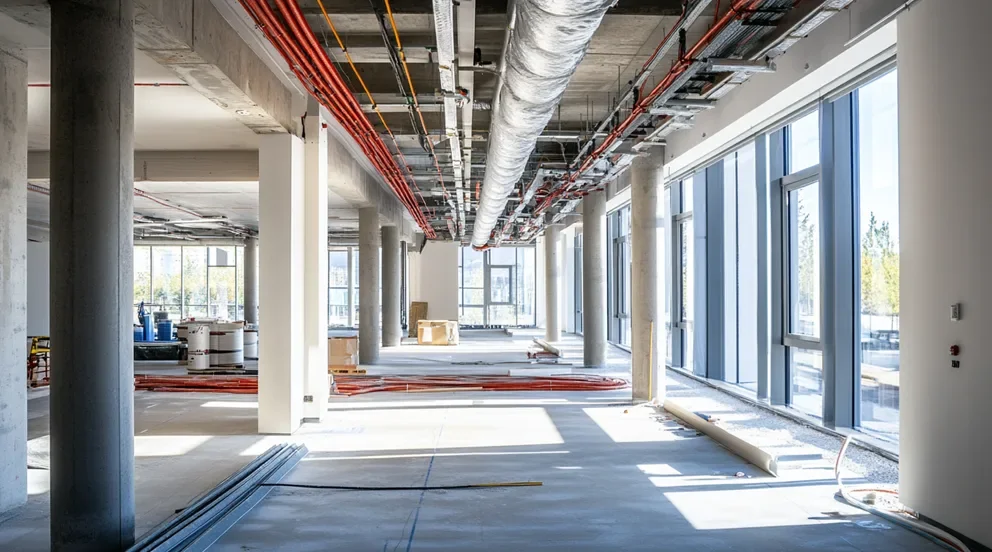MEP estimating software is a specialized tool designed to aid contractors and engineers in the construction industry. It serves the purpose of providing accurate cost estimates for Mechanical, Electrical, and Plumbing (MEP) projects. Through this software, users can efficiently evaluate the cost implications of these integral components, which are fundamental to any building’s operations.
The software typically comes equipped with various features meant to streamline and enhance the estimating process. This includes up-to-date material price databases, labor cost calculators, and sometimes, integration capabilities with different design software and project management platforms. These functionalities greatly reduce the likelihood of human error and vastly improve precision in preliminary project cost assessments.
Furthermore, modern MEP estimating software often provides a user-friendly interface that enables quick data input and analysis. The result is a significant savings in time and resources during project planning. Additionally, the software can be used to generate detailed reports which are beneficial in securing contracts, budget approvals, and maintaining financial control throughout the project lifecycle.
Content:
- Transforming the Construction Industry with MEP Estimating Software
- Stepping into the Future: A Deep Dive into MEP Estimating Software
- Breaking New Ground: The Power of MEP Estimating Software in Construction
- Revamping the Bricks and Mortar Industry with MEP Estimating Software
- The Role of MEP Estimating Software in Leading Construction’s Digital Revolution
Welcome to the comprehensive guide on MEP estimating software, where clarity meets efficiency in the bustling world of construction estimating. In today’s competitive marketplace, staying ahead requires not only skill but also the right set of digital tools. This article illuminates the game-changing advantages presented by adopting cutting-edge estimation software for MEP disciplines.
As we peel back the layers of this innovative technology, we dive into how it reinvents the traditional approach to cost estimation. We stand at the precipice of a new era, one in which meticulous projections and financial assessments are no longer riddled with uncertainty but are bolstered by precision—which only such industry-specific software can provide.
In anticipation of exploring all that MEP estimating software can offer, our article unfolds the nuances of this technology. From start-ups to established contracting firms, the insights we bring promise to influence strategies and decision-making, shaping the very way projects are conceived, budgeted, and implemented—from the initial bid to the final invoice.
Transforming the Construction Industry with MEP Estimating Software
The construction industry is undergoing a significant transformation, thanks largely to the advent of MEP estimating software. Traditionally, the process of calculating the costs for mechanical, electrical, and plumbing (MEP) systems has been cumbersome. But with the software’s streamlined processes, contractors can now experience nearly effortless estimations. By accurately projecting the expenses associated with these critical systems, builders can better manage their budgets and reduce waste.
A key feature of this innovative software is its ability to integrate complex data. As a result, it can analyze a wide range of variables, including material costs and labor rates. Moreover, its user-friendly interface allows for quick learning curves, ensuring that staff can become proficient in a short time. This software does more than just simplify calculations; it adds a layer of precision that was previously unavailable.
Construction projects can vary widely, and MEP software adapts to each unique project with ease. It allows for customization of estimates, accommodating specific project needs and local codes. Consequently, this reduces the risk of costly errors or oversights. Furthermore, the software fosters collaboration among team members, enhancing the overall workflow from concept to completion.
The environmental impact of construction is a growing concern. Fortunately, MEP software contributes positively by optimizing resource allocation. As projects use materials more efficiently, there is a tangible reduction in waste and a lesser environmental footprint. This not only helps to conserve resources but also aligns with the sustainability goals of many companies.
In conclusion, MEP estimating software is a pivotal tool for the construction sector. By embracing this technology, firms stand to gain competitive advantages such as enhanced accuracy, improved cost management, and sustainable practices. The industry is ripe for change, and it is technologies like these that will pave the way forward.
Stepping into the Future: A Deep Dive into MEP Estimating Software
MEP estimating software has ushered in a new era of efficiency and accuracy in the construction industry. With the ability to produce detailed cost estimates for mechanical, electrical, and plumbing work, this advanced tool is an essential asset for any forward-looking construction firm. It transforms the daunting task of MEP cost estimation into a streamlined, manageable process, alleviating the strain on resources and time.
One of the prime benefits of MEP estimating software is its exceptionally precise calculations. Relying on outdated methods often leads to discrepancies, but this software mitigates such risks. Its sophisticated algorithms analyze various cost factors, offering a level of detail that ensures projects stay on budget. Additionally, this level of precision is a safeguard against underbidding or overbidding, both of which can harm a construction business’s reputation and profitability.
MEP software offers unparalleled versatility. Regardless of the size or complexity of the project, it caters to the unique requirements of each job. It allows estimators to update costs, alter project parameters, and even accommodate last-minute changes with minimal disruption. This versatility not only fosters adaptability but also equips construction firms to handle an array of projects more effectively.
User experience is a hallmark of the latest MEP software. Its thoughtful design makes it accessible to professionals with varying levels of technical proficiency. Training periods are reduced, allowing teams to implement the software with minimal operational downtime. Furthermore, the intuitive nature of the software promotes higher adoption rates among construction crew members.
As we look to the future, the role of MEP estimating software in promoting eco-friendly construction practices cannot be overstated. By guaranteeing that estimates for materials and labor are as accurate as possible, the software significantly reduces waste production. This aligns perfectly with the industry’s pivot toward more sustainable construction methods. Ultimately, MEP estimating software does not just reshape the way estimators work; it redefines the success parameters for the entire construction industry.
Breaking New Ground: The Power of MEP Estimating Software in Construction
MEP estimating software is revolutionizing the construction industry, bringing groundbreaking changes to the way projects are estimated and executed. In the past, manual estimations created room for error, often leading to cost overruns and inefficiencies. Conversely, the precision of MEP software minimizes such risks, offering a dependable foundation for financial planning and project execution.
The software’s contribution to risk mitigation is one of its most applauded attributes. By handling complex calculations, it ensures that estimates are both tight and competitive. Contractors can breathe easier knowing that their bids are backed by data-driven insights. Additionally, the software takes into account fluctuations in material prices and labor costs, providing contractors with a dynamic tool in an industry known for its unpredictability.
Adaptability is at the core of MEP software. For instance, it can conform to various regional standards and codes, ensuring compliance across jurisdictions. This is particularly useful for companies with a national or global presence, as it allows them to pivot seamlessly between projects without a hitch. Moreover, the software’s adaptive nature facilitates efficient workflows and project management.
MEP software isn’t merely a tool for estimation—it’s also a powerful means of internal communication. By centralizing project data, it fosters transparency and accountability within the construction team. Project stakeholders can access consistent information, which paves the way for well-informed decision-making. This is critical in maintaining project timelines and budgets.
Noteworthy, too, is MEP software’s role in driving the digital transformation of construction. As the industry embraces technology, MEP software stands out as a beacon of innovation. It exemplifies the vast potential of digital tools to enhance traditional construction practices. The integration of such technology streamlines project management and sets the stage for future advancements in building and design.
Revamping the Bricks and Mortar Industry with MEP Estimating Software
MEP estimating software has become a cornerstone of contemporary construction practices, significantly revamping traditional approaches to project planning and execution. The bricks and mortar industry, once reliant on manual calculations and guesswork, now benefits from the acute precision and efficiency that MEP software provides. Estimators can produce more accurate bids, ensuring that projects kick off on the right financial footing.
Through its sophisticated estimation capabilities, MEP software addresses the complex tapestry of cost factors in construction. It accounts for every variable, from the price fluctuations of materials to manpower scheduling. This comprehensive approach to costing is indispensable for contractors who aim to deliver quality work while maintaining profitability. Without such technology, staying competitive in the fast-paced construction market would be challenging.
MEP software stands as a pinnacle of user accessibility and integration. Designed to complement existing workflows, it slips seamlessly into the operational fabric of construction firms. Teams can adapt to the software without major overhauls to their working methods. This is particularly beneficial in an industry where every second counts, as it allows professionals to swiftly incorporate the technology into their daily routines.
Beyond just making estimations, MEP software also promotes collaborative work environments. With shared access to estimations and real-time data updates, team members can work together more closely, breaking down silos that might have previously hindered project progress. This collaborative edge provided by MEP software is another reason it’s become an invaluable asset to construction firms worldwide.
The bricks and mortar industry is on the brink of a technological renaissance, and MEP estimating software is leading the charge. By providing a tool that elevates the accuracy, speed, and collaboration of construction estimates, it paves the way for an era of innovation and efficiency. The adoption of such software signals a commitment to technological advancement that will surely shape the future of construction.
The Role of MEP Estimating Software in Leading Construction’s Digital Revolution
MEP estimating software is at the forefront of the digital revolution sweeping the construction industry. More than a simple aid for calculation, it represents a quantum leap in how building projects are conceptualized and realized. By facilitating rapid and precise estimations, this software sets a high standard for both efficiency and accuracy, vital attributes for modern construction projects.
The heightened accuracy offered by MEP software is indispensable in a sector where margins can be tight. It provides contractors with the confidence to make informed business decisions, knowing that their financial estimates are based on the most reliable data available. Furthermore, the software significantly reduces the propensity for human error, ensuring that budgets are adhered to and timelines are feasible.
Construction projects today are multifaceted, often spanning across various specialties. MEP software supports cross-disciplinary collaboration by unifying different estimation efforts within a single framework.
Not only does MEP software set a new benchmark in estimation, but it also aligns perfectly with the sustainable ethos increasingly embraced by the construction industry. By optimizing the use of resources and predicting precise material requirements, the software plays a key role in minimizing waste, further solidifying its position as a tool for responsible and sustainable construction practices.
In essence, MEP estimating software is not merely an isolated technology but a catalyst for a broader transformation in construction. Its adoption reflects a commitment to innovation, efficiency, and sustainability that is reshaping the industry. As construction firms increasingly look to digital solutions, MEP software is leading the way, heralding a new era where technology and building meet to create something greater than the sum of their parts.



